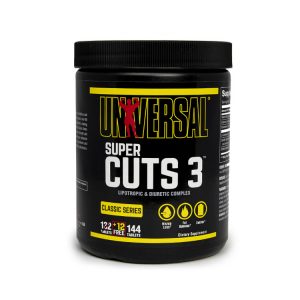Training for Hypertrophy & Strength
Weight training is typically divided into two categories: strength training or hypertrophy training. Unfortunately, these terms are generally misunderstood among average gym goers. This misunderstanding leads to the sporadic application of important individual training variables such as rep ranges, rest between sets, and volume. Therefore, it goes without saying that to see true adaptions in the body, you must follow the correct type of training to get the correct result.
Weight training is perhaps better divided into four subcategories: power, strength, hypertrophy, and endurance. You can design your training program to build more strength or muscle tone, thus targeting a specific adaption. All programs, however, will possess a little crossover, meaning you can use techniques from one training program and incorporate them into another.
If you want to increase your size, for instance, you will also increase your strength to some degree, and vice versa. Naturally, it is important to remember that size is not always indicative of strength (think of powerlifters). Although powerlifters are very strong and powerful, they do not possess the same muscle mass and aesthetic appearance of a well-conditioned bodybuilder.
This fact shows how the human body adapts to certain types of training. It may seem perplexing that both powerlifters and bodybuilders spend hours training hard with weights, but their results look completely different. The main difference is the training program – primarily the intensity, the rep ranges, and the rest used between sets. If you have a specific goal in mind, you can program your training to help you reach that goal.
What Is Hypertrophy?
Muscle hypertrophy is defined as the increase in cross-sectional area (CSA) due to the growth of contractile proteins, actin and myosin. Hypertrophy also creates an increase in glycogen storage and intracellular fluids within the muscle. We commonly refer to this experience as “the pump.” The pump creates a temporary environment of muscular swelling due to the targeted muscle’s increase in blood flow.
In general, hypertrophy training uses a moderate amount of weight, repetitions, and recovery periods to induce maximal metabolic stress and muscular damage (or microtears). This type of stress induces the release of endogenous testosterone growth hormone, which is a key component in muscular recovery. Hypertrophy could not occur without this hormonal response.
When training for hypertrophy, you can maximize this hormonal response by keeping your rest periods between sets from one to two minutes. You can also train one or two body parts per session once or twice per split. Typically, this means seven to ten days, depending on your program. Note that total volume might need to be adjusted when training the same body part twice per week. If you are training a body part twice per week and you notice a lack of adaptation, it’s possible you could be overtraining.
Other advanced techniques for hypertrophy training include forced reps, drop sets, and super sets. A typical hypertrophy training program will use sets per exercise ranging from three to four, while the repetitions will range from eight to twelve (but can go as low as six reps). You should use weights between 67-85% of your one-rep max (1RM). So if your bench is 400 lb, then the weight to use for hypertrophy training should range between 270-340 lb. It is very important that you maintain proper form and technique with each exercise; don’t completely sacrifice form to lift heavier weight.
Using momentum, shorter range of motion, speed, and improper techniques to lift heavier weight is not only counterproductive to creating a hypertrophic response, it is dangerous to your health. Focus on controlling the weight through the entire movement. To help with this, employ a tempo of one second on the concentric (contraction) movement and one to two seconds on the eccentric (elongation) movement.
What About Strength?
Muscular strength is the maximal amount of external force that a muscle or group of muscles can produce. This type of training employs the use of heavier loads and greater periods of rest than those used in hypertrophy training. For example, you might design your strength program with sets of four to six repetitions, with rest periods ranging from two to five minutes.
The total number of sets completed will also increase, ranging from three to six sets per exercise. This type of training creates a neural and physiological response and can be heavily taxing on your central nervous system (CNS). Your body will also recruit a greater number of muscle fibers, meaning each contraction is very intense.
Strength training and hypertrophy training can complement each other. For example, the adaptations that occur from hypertrophy training (increase in size) can help you increase the strength capability of your muscles, whereas the adaptations that occur from strength training can improve muscle growth.
No matter what you’re trying to accomplish, both training phases should be incorporated into your training program if you are looking to increase size or strength. You can tailor them to fit your specific goals by spending more time in one phase than the other.
How long should you stick to each phase? On average, hypertrophy and strength training phases can last two to six weeks. You should also incorporate de-load weeks, which consists of backing off intensity and volume to ensure proper recovery and prevent injury.
The Takeaway
Too often, gym goers spin their wheels needlessly by sporadically varying their reps and their exercises with no rhyme or reason. This haphazard approach might work for a while, especially among beginners. However, lifters will need to take a closer look at their programs and tailor them for a more specific goal if they want to continue making progress. This basic information on hypertrophy and strength may vary depending on the individual’s goals and experience. These are general principles to follow. For a more specific training program to address your individual needs, consider hiring a certified strength coach.

